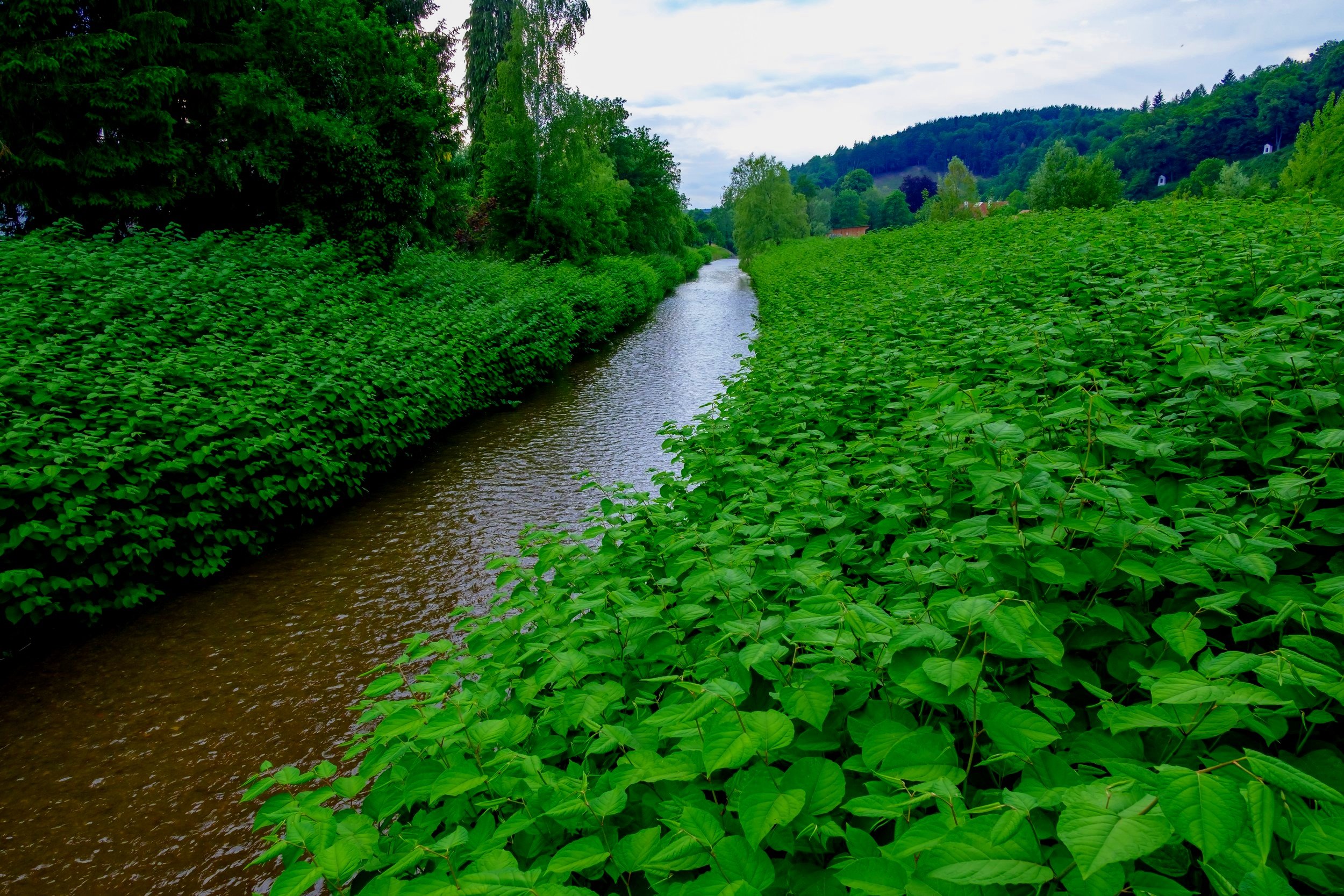
Japanese Knotweed
Reynoutria japonica or Polygonum cuspidatum
Therapeutics
anti-inflammatory, antioxidant rich (oil soluble), used to treat gingivitis.
Plant Anatomy & Growth
This herbaceous perennial has hollow jointed stems that shoot vertically upwards from the ground in dense clusters growing up to several meters. It has a large, fast growing root system that reaches out laterally. These woody rhizomes can survive years laying dormant. Once grown they have heart shaped leaves and small tendrils of white flowers. These bloom in late summer from each branch.
Native to East Asia but invasive across North America and Europe.
Harvest the root in particular but the young shoots may be eaten and taste similar to rhubarb. The flowers as well may be harvested.
Color
Dark brown exterior to the roots with a creamy yellow orange interior.
Green heart shaped leaves that may be speckled with red or purple tinges.
Creamy white flowers very small that grow in panicles extending from the stem.
Scent
herbaceous
Taste
mild, herbaceous, tart
Constituents
High in resveratrol, an oil soluble antioxidant. Resveratrol when applied topically has been shown to help the skin repair UV damage.
Uses
Consume the plant itself or a tincture. Apply an oil extract topically.
No known adverse side effects, but there is not a significant amount of data available. Alway consult a licensed practitioner prior to use.
References
Cygan, Douglas. Preventing the spread of Japanese knotweed: Reynoutria japonica (AKA: Fallopia japonica, Polygonum cuspidatum): best management practices. New Hampshire Department of Agriculture Markets & Food 2018.1-3.
Korać RR, Khambholja KM. Potential of herbs in skin protection from ultraviolet radiation. Phcog Rev 2011;5:164-73.
Gonzalez Begne M, Yslas N, Reyes E, et al. Clinical effect of a Mexican sanguinaria (Polygonum aviculare L.) on gingivitis. J Ethnopharmacol 2001;74:45-51.
Martini, Paolo. Japanese knotweed identification- a complete guide. Japanese knotweed news 2019. rev 2022. https://www.knotweedhelp.com/japanese-knotweed-guide/how-to-identify-knotweed/


